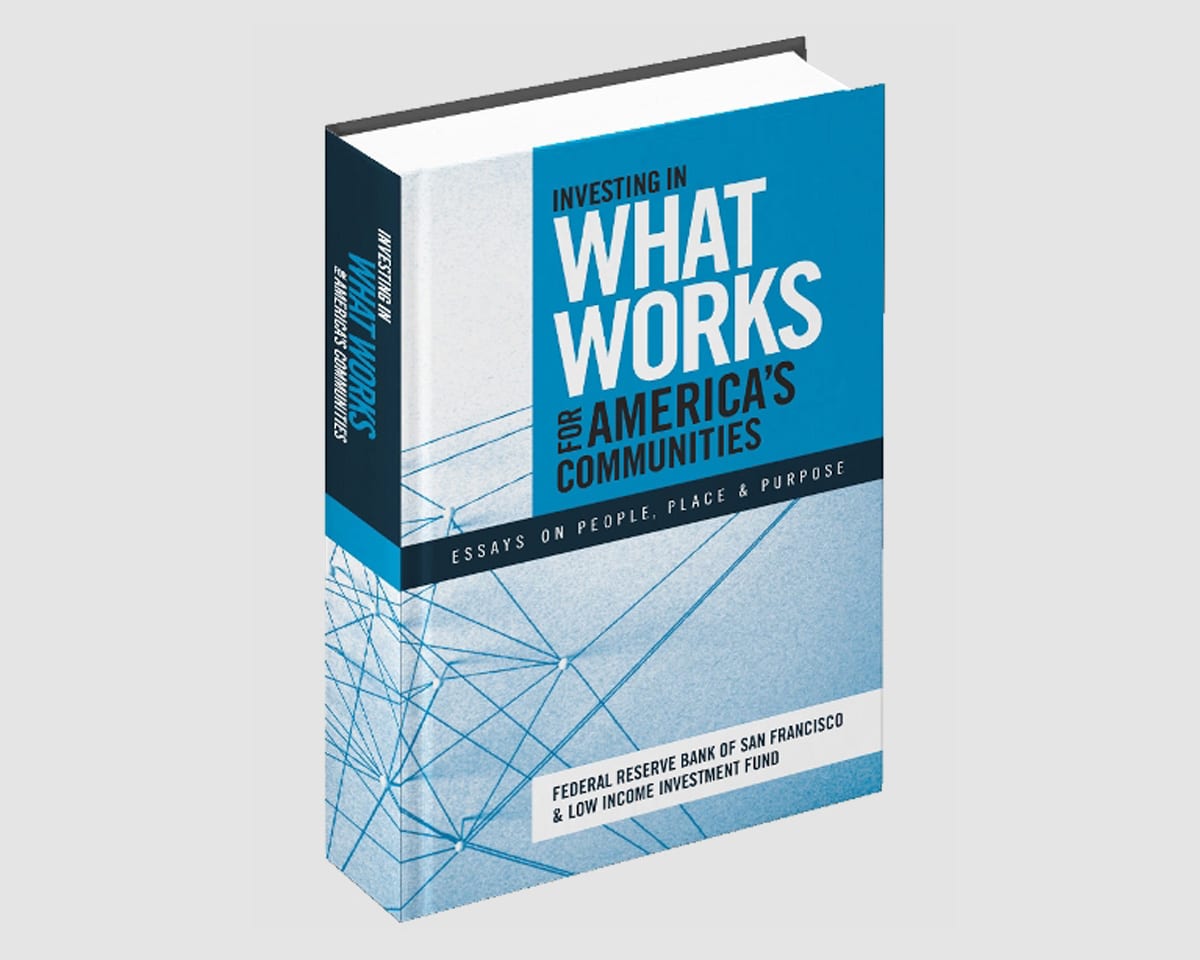What Works for America’s Communities?
By Maya Brod, December 18, 2012

The latest data from the U.S. Census Bureau reveals that poverty levels in the U.S. are stuck at historically high levels. Though the sluggish economy is partly to blame, the nature of poverty is also changing—it is increasingly suburban; it is deeper than it was just a decade ago (meaning that more individuals are living in families with incomes under half the poverty line); and the prevalence of high-poverty areas is growing across the country.
These new realities spurred the Low Income Investment Fund (LIIF, a Burness client) and the Federal Reserve Bank of San Francisco to publish Investing in What Works for America’s Communities. The book is a compilation of 28 essays written by a wide array of leaders, including community and economic development experts, practitioners, researchers, philanthropists and public policymakers. They examine what we can learn from the history of community development and provide dozens of innovative ideas for bringing opportunities to America’s struggling communities.
These ideas were showcased on December 4 when LIIF, the Federal Reserve Bank of San Francisco and the Citi Foundation hosted a discussion in Washington, DC for the public launch of Investing in What Works.
The event convened several of the book’s authors and top community development experts to share their findings and efforts for improving low-income communities.
 One theme that resonated with all speakers was that to really make progress in eliminating poverty, all sectors need to work together to invest in people and places. This means that a struggling community should not only have a more stable physical environment (such as quality, affordable housing), but also access to jobs, educational opportunities, transportation, health care, and other services that support individuals and their families. Burness illustrated this idea in an infographic, shown on the right, which highlights the importance of taking a multidisciplinary approach to building healthy communities.
One theme that resonated with all speakers was that to really make progress in eliminating poverty, all sectors need to work together to invest in people and places. This means that a struggling community should not only have a more stable physical environment (such as quality, affordable housing), but also access to jobs, educational opportunities, transportation, health care, and other services that support individuals and their families. Burness illustrated this idea in an infographic, shown on the right, which highlights the importance of taking a multidisciplinary approach to building healthy communities.
- Watch the full webinar of the December 4 event
- Read Risa Lavizzo-Mourey’s piece in The Huffington Post on how we can help communities thrive. Lavizzo-Mourey is the president and CEO of the Robert Wood Johnson Foundation and contributed an essay to the book, “Why Health, Poverty, and Community Development are Inseparable.”
- Listen to Houston Public Radio, KUHF’s segment on Angela Blanchard and her organization, Neighborhood Center’s Inc. Blanchard talks about Neighborhood Centers and the success of the initiative in the Investing in What Works essay, “People Transforming Communities. For Good.”
